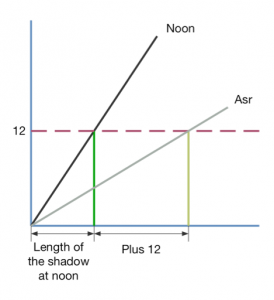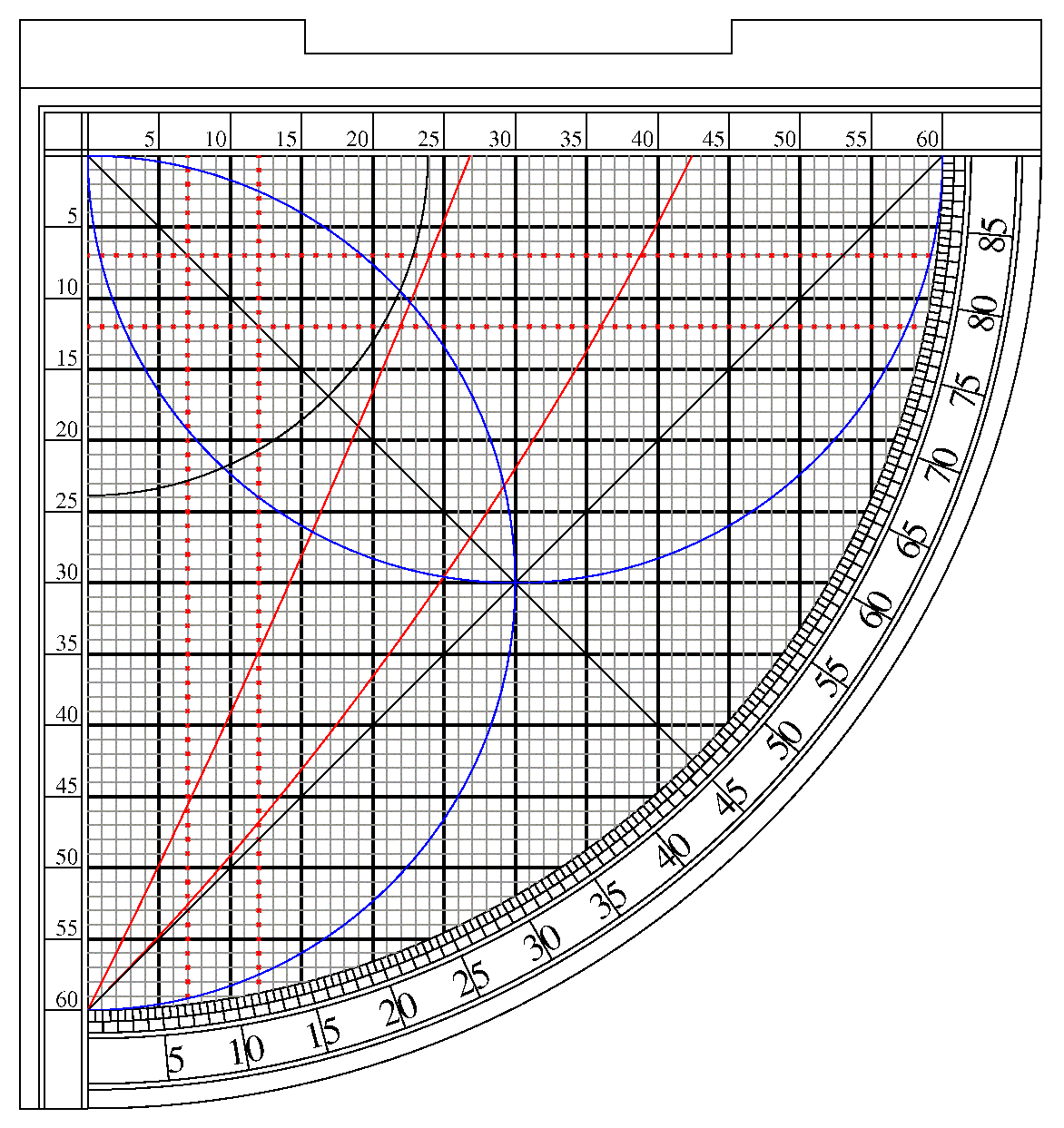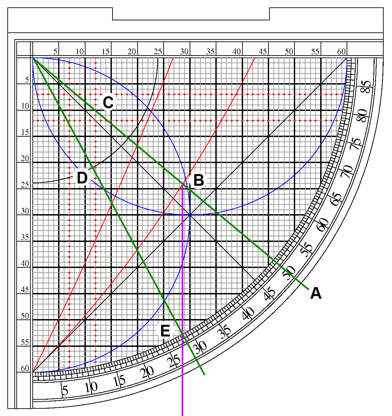Deconstructing the Sine Quadrant-Part 5: The specialized lines – Continued
- on 02.23.14
- Random Jottings, Sine Quadrant
- Comments Off on Deconstructing the Sine Quadrant-Part 5: The specialized lines – Continued
In part four we examined the Asr lines and how to use them to find the proper times for the start and end of the Asr prayer required of all Moslems. This week we are going to look at an alternate method of determining that by examining yet another of the sine quadrant’s advanced functions.
Links
The previous installments in this series can be found here:
Part One
Part Two
Part Three
Part Four
Printable example Sine Quadrant
The Other Asr Lines
The two arcs described in the last part of this series are one method of determining the times for the midafternoon Asr prayer, but there are alternative methods. Some sine quadrants do not have the arcs, but rely on a different set of markings. Depending on the maker, devices will have one set of markings or the other, or both, or none.
If you look at the example sine quadrant pictured above, you will see, in addition to the previously discussed Asr arcs, two lines of markings (marked in red dots) parallel to the horizontal and vertical scales at 7 and 12 units respectively.

Traditionally the markings at 12 units are most often seen, but I have seen several examples with the additional markings at 7 units. It does not matter which set are used, as the answer they give is the same. For clarity, I will concentrate on the 12 unit line, but the steps I describe work just as well for the 7 unit line.
As was discussed in part four, the time for the start and end of the Asr prayer are defined by the length of a shadow: The period for Asr begins when the shadow of a vertical pole is equal to its noontime length plus the length of the pole; and ends when the shadow is the noontime length plus twice the length of the pole[1].
The vertical line at 12 units can be used to simulate a pole 12 units high[2]. By marking where the cord crosses the line when it is set to the Sun’s noon angle you know the length of the shadow at noon. Then by adding 12 units and moving the cord to cross at that point, you can compute the angle of the Sun at the start of Asr.
To demonstrate that using the Asr arc and the Asr line both give the same answer, let’s work through an example where the Sun is at a height of 50 degrees at local noon.
First set the cord of the quadrant on the 50 degree mark (A). Note where it crosses the Asr arc at (B), and follow that line down to find an angle of 28.5 degrees. Now notice where the cord crosses the 12 unit Asr line at 10 units (C). add 12 units to this (the “height” of the “pole”), to get 22 (D) and move the cord to cross at this point. The cord will lie at the expected angle, 28.5 degrees (E).
To find the angle of the Sun at the end of Asr, you just need to add an additional 12 units to simulate adding twice the length of the pole.
Notes:
[1]Bir, Atilla. (2008). Principle and Use of Ottoman Sundials. Retrieved from http://www.muslimheritage.com/topics/default.cfm?ArticleID=942
[2]Charette, François, Mathematical Instrumentation in Fourteenth-Century Egypt and Syria. The Illustrated Treatise of Najm al-Din al-Misri, Brill, Leiden (2003). Pg 176-177

